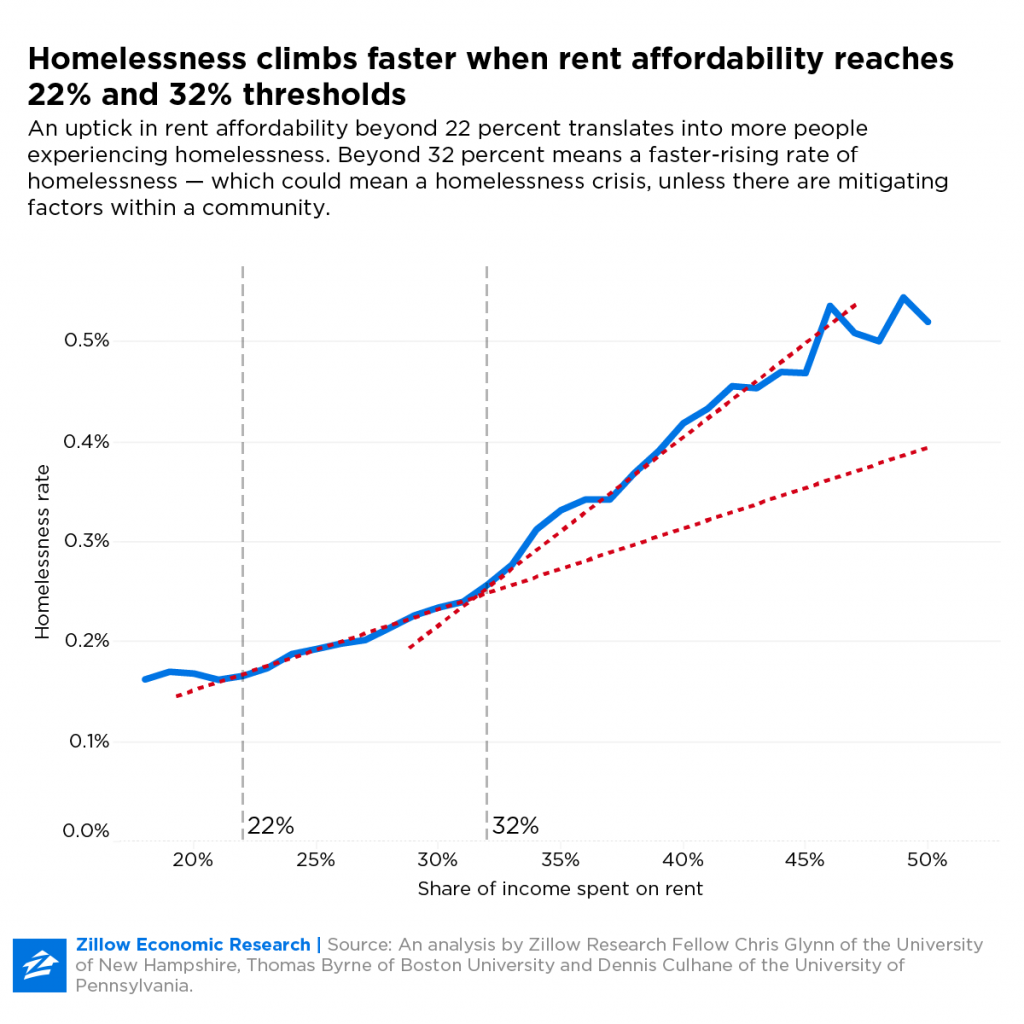Rising rents across the country are burdening financially limited renters, and contributing to higher rates of homelessness in many of the nation's least affordable markets.

The U.S. Department of Housing and Urban Development (HUD) estimates that 553,752 people nationwide experienced homelessness in 2017, based on a point-in-time count in January. Since 2010, the counted homeless population has fallen by about 13 percent. However, prior research shows these counts are imprecise, and likely do not include the entire homeless population in the country. The actual number of people who were homeless is estimated to be closer to 661,000, 21 percent higher than the officially reported population.
New research from Zillow, in collaboration with researchers at the University of New Hampshire, Boston University School of Social Work and University of Pennsylvania, shows that the homelessness rate accelerates much more quickly when the rent burden climbs above 32 percent. The research also identified distinct groups of communities respond similarly to changing rents and poverty levels, among other latent factors – all of this information can help policymakers and social-service organizations in otherwise disparate areas hone in on the most effective mitigation efforts by learning from the experiences of other areas in their peer group. This new research expands on Zillow research last year that examined the relationship between rising rents and homelessness.
Nationwide, about 1,500 more people can be expected to experience homelessness when the rent burden increases by 2 percentage points. The effects of a larger rent burden are more extreme in already unaffordable areas where rent burdens are beyond the 32 percent tipping point. In Los Angeles, that 2-percentage point increase could force an additional 4,227 people into homelessness. In other communities, homelessness is predicted to decline despite increasing rent burdens.
Nationwide, a renter earning the median U.S. income and looking to rent the median-priced apartment should expect to spend about 28 percent of their income on rent, up from historic norms closer to 26 percentv. But across the country, the rent burden already exceeds the 32 percent threshold in 100 of the 386 Continuums of Carevi included in this analysis, led by Monroe County in Florida, where the median market rate rent consumes 62.9 percent of the area's median household income. Also on this list are Los Angeles (49 percent), Portland, Oregon (36.7 percent), and Seattle (34.2 percent), all of which have declared a homelessness "state of emergency."
All of these areas fall into the same group of communities defined by high rates of homelessness, unaffordable housing and high rates of extreme poverty. This cluster is home to 15.1 percent of the total U.S. population, but 47.3 percent of the nation's homeless population as officially reported by the 2017 HUD point-in-time count.
Conversely, a separate cluster, which includes areas like Pittsburgh and Cook County, Illinois, is characterized by a low homelessness rate, affordable housing, and the lowest rates of extreme property. This does not mean homelessness doesn't exist in these areas, only that housing costs and low income play a smaller part in defining the challenge in these communities, and unobserved factors may be playing a bigger role.